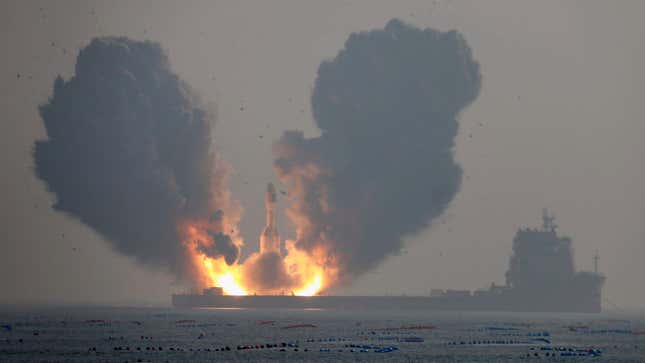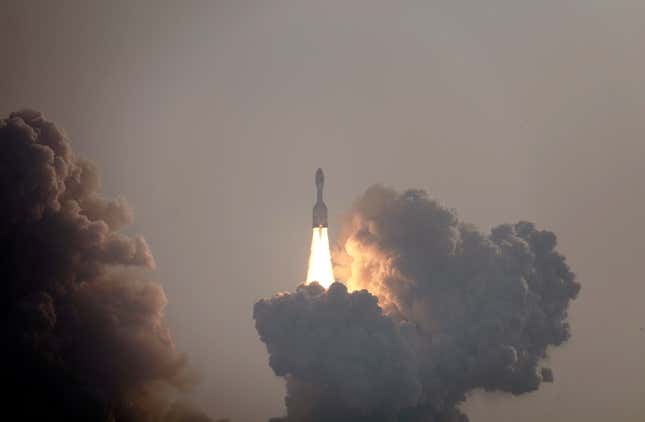Shandong-based Orienspace pulled off its first-ever launch, breaking the record for the largest payload capacity on a commercial rocket for China’s growing space industry.
Would Peter Capaldi Return to Doctor Who?
The Chinese company launched the Gravity-1 rocket on Thursday at 12:30 a.m. ET from a mobile platform in the Yellow Sea, producing massive plumes above the surface of the water that framed the launch vehicle’s ascent into the skies. The rocket carried three commercial weather satellites, Yunyao-1 (18-20), to orbit.

Orienspace was founded in 2020, and Gravity-1 marked its first rocket launch; success like this, in which a company’s inaugural launch vehicle reaches orbit on its first attempt, is extraordinarily rare. The three stage rocket can lift around 14,330 pounds (6,500 kilograms or 6.5 metric tons) to low Earth orbit, or 9,260 pounds (4,200 kilograms or 4.2 metric tons) to a sun-synchronous orbit using a kerosene-liquid oxygen third stage, according to China’s state-run Xinhua news agency. That’s the largest payload capacity for China’s commercial space industry, carrying more than twice the weight capability of the previous two largest Chinese solid rockets, CAS Space’s Kinetica-1 and China Rocket’s Jielong-3, according to SpaceNews.
What’s more the “rocket is the world’s largest solid-propellant launch vehicle and the country’s first commercial rocket equipped with strap-on boosters,” according to Xinhua. Solid-propellant launch vehicles use solid rocket motors as its primary source of thrust. By contrast, liquid-fueled rockets use a combination of liquid fuel (such as hydrogen or methane) and an oxidizer, which are stored separately and combined in a combustion chamber to produce thrust. Solid rockets can be more reliable and easier to handle, while liquid-fueled rockets offer greater flexibility and control over thrust and can be more efficient for larger payloads and longer missions.
The Chinese company is already working on two other vehicles, Gravity 2 and 3. Gravity-2 will have a liquid-fueled core stage and solid rocket boosters and is designed to loft 25.6 tons to low Earth orbit while Gravity-3 will carry up to 30 tons, according to Space.com. SpaceX’s Falcon 9 rocket can carry up to 25 tons to low Earth orbit, while Falcon Heavy can loft 70 tons.

China’s commercial space industry has been growing since 2014 when the Chinese government began fostering a better environment for space companies, allowing investments to flow into spaceflight companies rather than continue to let state-owned enterprises dominate the field.
In July 2023, a Chinese company became the first in the world to launch a methane-fueled rocket to orbit. Last year, China had a record-breaking 67 rocket launches. The Gravity-1 launch was the fourth launch of 2024 for China.
Additional reporting by George Dvorsky.
For more spaceflight in your life, follow us on X (formerly Twitter) and bookmark Gizmodo’s dedicated Spaceflight page.






